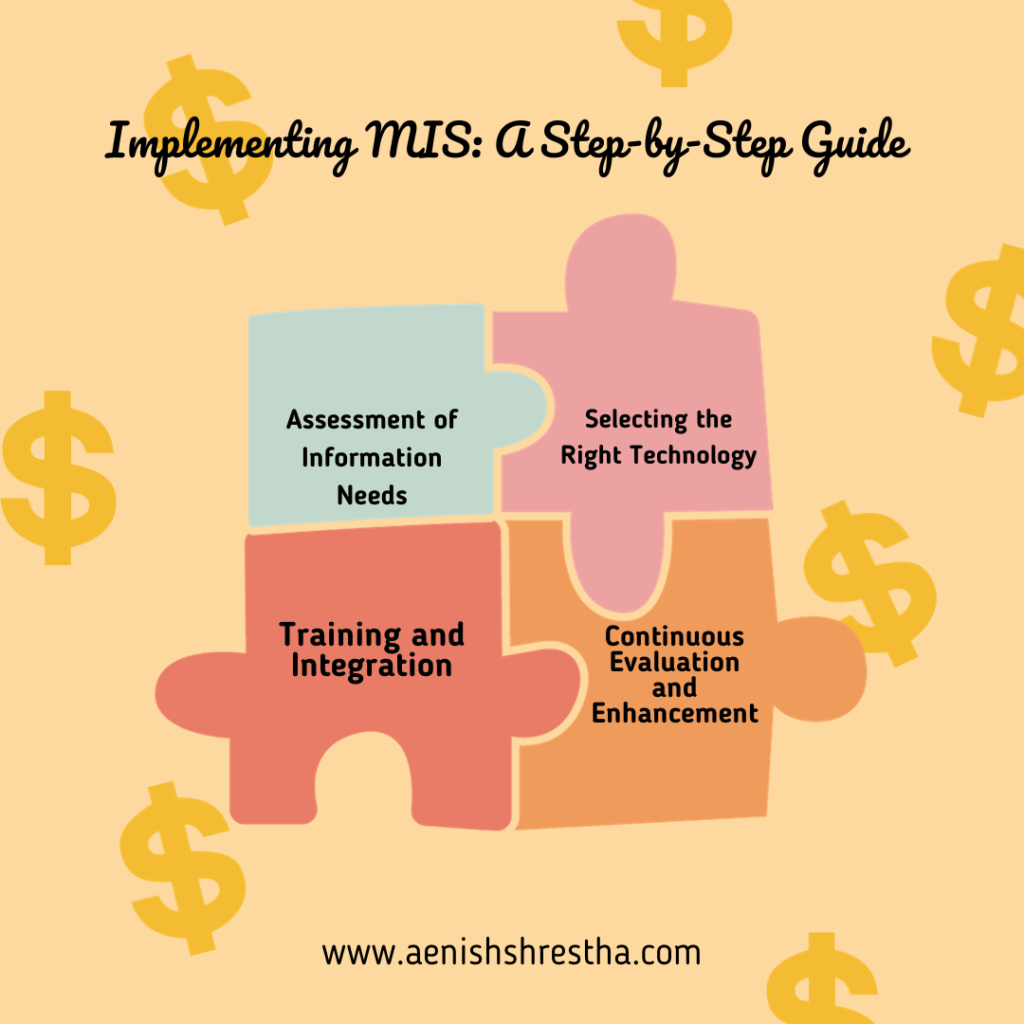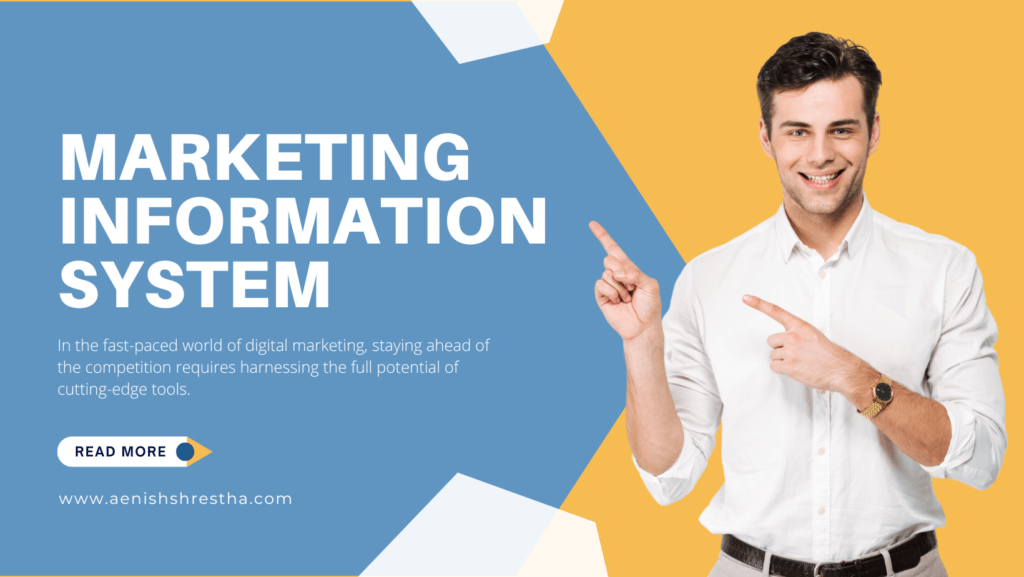In the fast-paced world of digital marketing, staying ahead of the competition requires harnessing the full potential of cutting-edge tools. One such indispensable tool that stands as the linchpin of strategic decision-making is the Marketing Information System (MIS). In this comprehensive guide, we delve deep into the intricacies of Marketing Information Systems, uncovering their pivotal role in propelling businesses to new heights.
Understanding the Essence of Marketing Information Systems
Defining MIS
At its core, an MIS is a structured framework that facilitates information collection, processing, and utilization to support marketing decisions. It amalgamates technology, people, and processes to provide a holistic view of the market landscape. The Marketing Information System acts as the nerve center, orchestrating data-driven insights that empower organizations to make informed choices.

Components of an MIS
1. Data Collection
A robust Marketing Information System starts with a meticulous data collection process. It aggregates data from diverse sources, including market research, customer feedback, and competitor analysis. The emphasis here is on quantity and quality, ensuring a comprehensive dataset that forms the bedrock of subsequent analyses.
2. Data Processing
Once the data is amassed, the Marketing Information System undertakes a sophisticated processing phase. Advanced algorithms and analytics come into play, transforming raw information into meaningful patterns and trends. This distilled data becomes the compass for strategic marketing initiatives.
3. Information Storage
Central to the efficacy of a Marketing Information System is the seamless storage of information. Cloud-based solutions and secure databases ensure that data is not only accessible but also protected. This fosters a conducive environment for collaboration and quick retrieval when needed.
4. Information Retrieval
The real-time nature of business demands instantaneous access to critical information. An efficient MIS incorporates mechanisms for swift information retrieval, empowering decision-makers with timely insights for agile responses to market dynamics.
5. Information Dissemination
Equally important is the dissemination of insights across the organizational hierarchy. The MIS ensures that relevant stakeholders receive tailored reports, fostering a shared understanding of market dynamics and aligning everyone toward common objectives.
Advantages of Embracing MIS in Your Marketing Strategy
1. Strategic Decision-making
With a well-implemented MIS, businesses can bid farewell to gut-based decisions. Instead, strategic choices are grounded in data, mitigating risks, and maximizing opportunities.
2. Competitive Edge
In a landscape where every edge matters, an MIS provides the differentiator. It empowers businesses to stay ahead of industry trends, outmaneuver competitors, and carve a niche in the market.
3. Resource Optimization
Efficiency is the cornerstone of success. By streamlining processes through data-driven insights, an MIS enables optimal resource allocation, minimizing wastage and maximizing ROI.
4. Adaptability to Market Changes
Markets are dynamic, and adaptability is key. An MIS equips businesses with the agility to pivot strategies swiftly in response to market shifts, ensuring relevance and sustained growth.
Implementing MIS: A Step-by-Step Guide

1. Assessment of Information Needs
Begin by identifying the specific information needs of your organization. What data is crucial for informed decision-making? Tailor your MIS to address these needs explicitly.
2. Selecting the Right Technology
The success of an MIS hinges on the technology underpinning it. Choose scalable, user-friendly solutions that align with your organizational structure and objectives.
3. Training and Integration
Invest in comprehensive training programs to equip your team with the skills required to leverage the MIS effectively. Seamless integration into existing workflows ensures a smooth transition.
4. Continuous Evaluation and Enhancement
An MIS is not a one-time setup but an evolving entity. Regularly evaluate its performance, gather user feedback, and implement enhancements to align it with evolving business requirements.
Future Trends: MIS 2.0
Artificial Intelligence Integration
The future of MIS lies in the integration of artificial intelligence. Machine learning algorithms will not just analyze data but also learn and adapt, pushing the boundaries of predictive analytics to new frontiers.
Blockchain for Enhanced Security
As data security becomes an escalating concern, the integration of blockchain technology ensures an incorruptible ledger, fortifying the integrity of the information stored within the MIS.
Unlocking Business Success with MIS
In conclusion, embracing a robust Marketing Information System is not just a choice but a strategic imperative in today’s digital landscape. It’s the compass that guides your ship through the turbulent seas of the market, ensuring you not only stay afloat but triumph over the competition.
TO READ OUR OTHER BLOGS -> Blogs
FAQs
What is the primary purpose of a Marketing Information System (MIS)?
The primary purpose of an MIS is to facilitate informed decision-making in the field of marketing. It collects, processes, and disseminates data, providing businesses with valuable insights to shape their strategies.
How does MIS contribute to competitive advantage?
MIS contributes to a competitive advantage by empowering businesses to stay ahead of industry trends, outmaneuver competitors through data-driven strategies, and carve a distinctive niche in the market.
What are the key components of an MIS?
The key components of an MIS include data collection, data processing, information storage, information retrieval, and information dissemination. These components work together to ensure a holistic view of the market landscape.
How can businesses optimize resources using MIS?
MIS enables resource optimization by streamlining processes through data-driven insights. It helps in identifying areas of wastage, allocating resources efficiently, and maximizing return on investment.
Is MIS a one-time setup, or does it require continuous evaluation?
MIS is not a one-time setup; it requires continuous evaluation and enhancement. Regular assessments of its performance, gathering user feedback, and implementing improvements are essential to keep it aligned with evolving business requirements.




